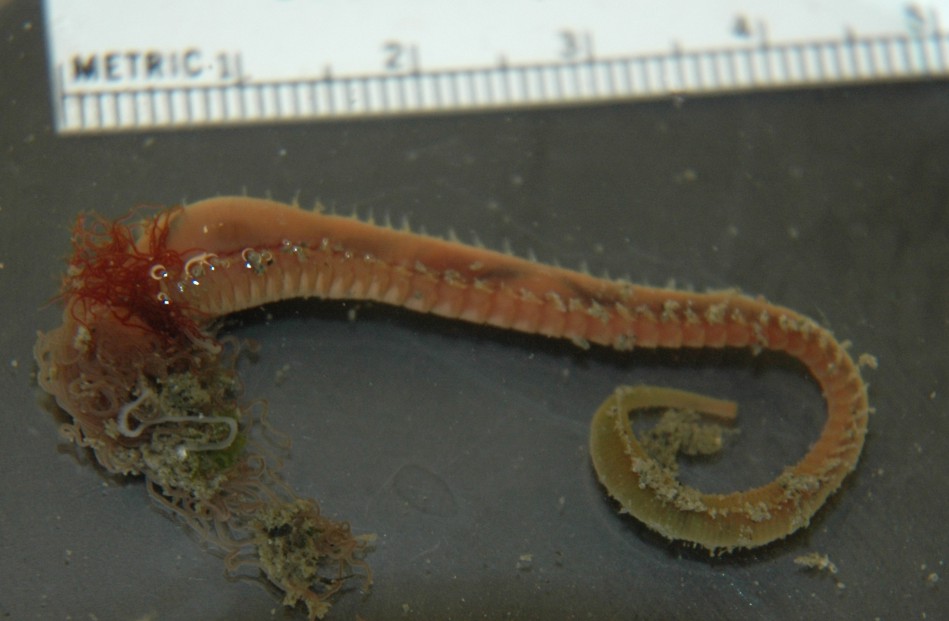Thelepus sp.Common name(s): Spaghetti worm |
|
| Synonyms: |  |
| Phylum Annelida
Class Polychaeta Order Terebellida Family Terebellidae |
|
| Thelepus sp, from Guemes Channel, Anacortes, WA | |
| (Photo by: Dave Cowles, July 2005) | |
Note: Though this individual keyed out to Thelepus japonicus Marenzeller, 1884 in Kozloff's key, Leslie Harris, the Polychaete Collections Manager at the Natural History Museum of Los Angeles County, California has kindly informed me that it is questionable whether it is actually that species. I have therefore listed it here as Thelepus sp.
How to Distinguish from Similar Species:Thelepus crispus has uncini in an oval loop on some segments. Thelepus setosus is missing notosetae from about the last 40 segments and the gill filaments are not coiled.
Geographical Range:
Depth Range:
Habitat:
Biology/Natural History: Terebellids build thin, membranous, sand-encrusted tubes in soft mud and sand. They extend their feeding tentacles from the entrance of the tube like spaghetti over the surface of the nearby sediment. The tentacles are extended out from the burrow by ciliary creeping and they can be retraced by muscular action. Mucus and ciliary action on the feeding tentacles transports small organic particles from the sediment to the mouth, especially along a groove along one side. Mucus and ciliary action on the feeding tentacles transports small organic particles from the sediment to the mouth.
There are several genera of terebellids that are difficult to tell apart in the field. The feeding tentacles of Thelepus has threadlike, unbranched tentacles, and gills of similar length. Neoamphitrite and Terebella have dark, branching tentacles, which are longer than the gills which are white. Neoamphitrite has 17 thoracic segments while Terebella has 23 to 28.
Members of Family Terebellidae have special pumping vessels at the base of the gills to actively pump blood through them.
| Return to: | |||
| Main Page | Alphabetic Index | Systematic Index | Glossary |
References:
Dichotomous Keys:Kozloff 1987, 1996
General References:
Scientific
Articles:
Web sites:
General Notes and Observations: Locations, abundances, unusual behaviors:
Authors and Editors of Page:
Dave Cowles (2005): Created original page